
The HMB Endeavour replica moored at the Australian National Maritime Museum in Sydney. Launched in 1993, the replica of James Cook’s Endeavour used during his first exploratory voyage around the world still goes out on sailing adventures.
By Richard Varr
I’m crawling on my hands and knees in the cramped and low-ceiling belly of the HMB Endeavour to reach the so-called Great Cabin at the ship’s stern. Imagine calling the 18th century brigantine home for just over three years with one of the few creature comforts being drop-down hammocks swaying at the whim of frothy ocean waves. Yet 94 officers, sailors and scientists did just that on a momentous voyage of exploration to a vast southern land called Terra Australis.
“The Great Cabin was used by the scientists for their mapmaking and illustrations of all the new flora and fauna,” says Kelvin Boyd, a longtime volunteer leading the tour aboard the fully-rigged wooden ship docked against a backdrop of gleaming skyscrapers at Sydney’s Australian National Maritime Museum. The three-masted Endeavour, crisscrossed with rope ladders, is an exact replica of famous British Captain James Cook’s Royal Navy research vessel used on his first of three voyages around the world.
Illuminated by slanted narrow windows, the Great Cabin is where then Lieutenant Cook worked alongside famous naturalists and botanists Sir Joseph Banks and Daniel Solander, and where he dined with fellow officers. When it comes to size, however, the Great Cabin is actually a small room with a central table and flanked by tiny sleeping cabins.
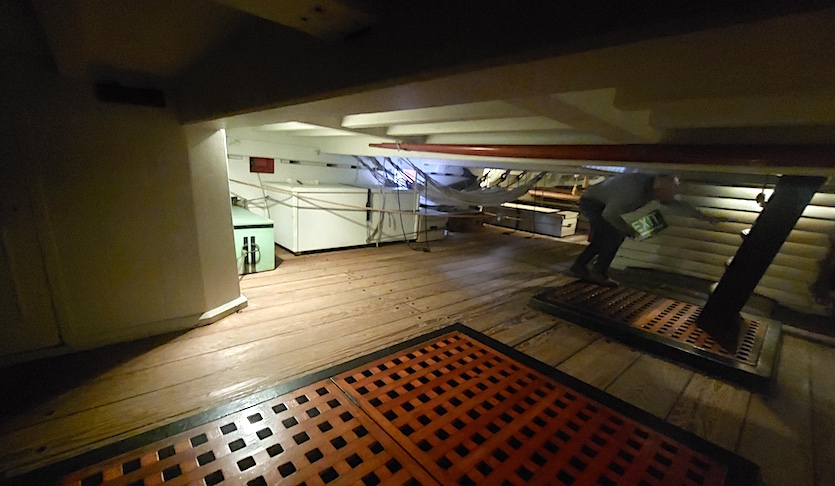
Below deck aboard the HMB Endeavour replica, this area with a very low ceiling leads to the Great Cabin where then Lieutenant James Cook worked and dined with mission scientists and fellow officers. Photo by Richard Varr
In 1770, Endeavour was the first European ship to reach Australia’s east coast with landings at 14 different locations over four months. One site was on a peninsula in Botany Bay (the name inspired by Banks and Solander) at what’s now Inscription Point just south of Sydney’s airport. A commemorative obelisk stands there today on a green hillside sloping down to a rocky shoreline. During a later landing, Cook declared Australia as part of the British Empire. While the Dutch were the first Europeans to reach the continent in 1606 and were likely followed by others, none had claimed the land.
The Endeavour replica and Inscription Point are just two of the many highlights and reminders of Cook’s journey to Australia. While visiting Sydney and Melbourne, I discovered statues, monuments, artifacts, documents and even an original English cottage – all part of his explorations and local legacy. His 1768-1771 venture aboard Endeavour was the first voyage. He commanded the HMS Resolution for the second and third, the latter culminating with his death in Hawaii in 1779.
Endeavour replica in a modern harbor
The idea of an Endeavour replica was proposed by a historian on the Australian National Maritime Museum Council to represent tangible links with Australia’s European heritage and Captain Cook. The ship was launched in 1993 and set sail around the world before its permanent berth at the museum in 2005 at Darling Harbour with full views of Sydney’s dramatic skyline. The barque still sets sail along the Australian coast with onboard opportunities open to the public through the museum’s website.
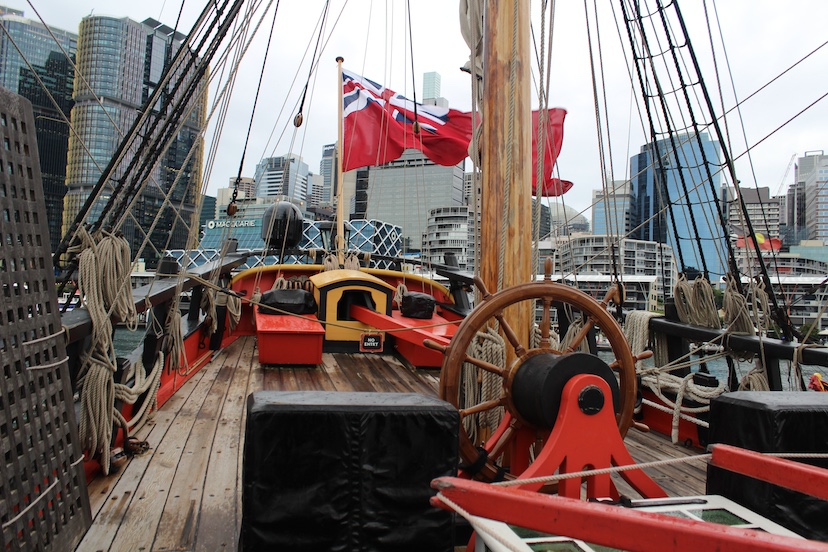
The deck of the HMB Endeavour replica, moored at the Australian National Maritime Museum in Sydney, is festooned with rope ladders and rigging. At the ship’s stern is the Australian Red Ensign maritime flag. Photo by Richard Varr
“We’re the most accurate replica in the world because we have the original plans from the refit (formerly a cargo ship) when she became the HMB Endeavour,” says crew member Callum Hindhaugh. Atop the 110-foot-long wooden-plank deck, rope ladders extend from the ship’s masts that support up to 28 sails, and an Australian Red Ensign maritime flag flutters at the stern. Below deck, dining tables line the ship’s sides and hammocks drop out from the low ceiling.
Display barrels with mock salted meat, sauerkraut (for Vitamin C to prevent scurvy), and beer and other spirits sit next to a central iron stove called a fire hearth. “All the food for the 94 people was prepared there. Because it’s an open fire, there was always a fear of fire on a timber ship and that’s why it’s sitting on stone,” points out Boyd.
Captain’s log: a handwritten journal
The actual 753-page journal from Cook’s Endeavour voyage is now in the National Library of Australia in the capital Canberra. It’s the most famous item in its collections and one of the country’s most significant historical documents. Cook logged the entire journey with fluid sentences and his consistent penmanship that slanted words to the right.
When leaving the east coast of Australia, for example, he entered the following passage claiming the land for England at Possession Island, dated August 22, 1770: “I now once more hoisted English Colours and in the Name of His Majesty King George the Third took possession of the whole Eastern Coast from the above latitude down to this place by the name of New South Wales.”
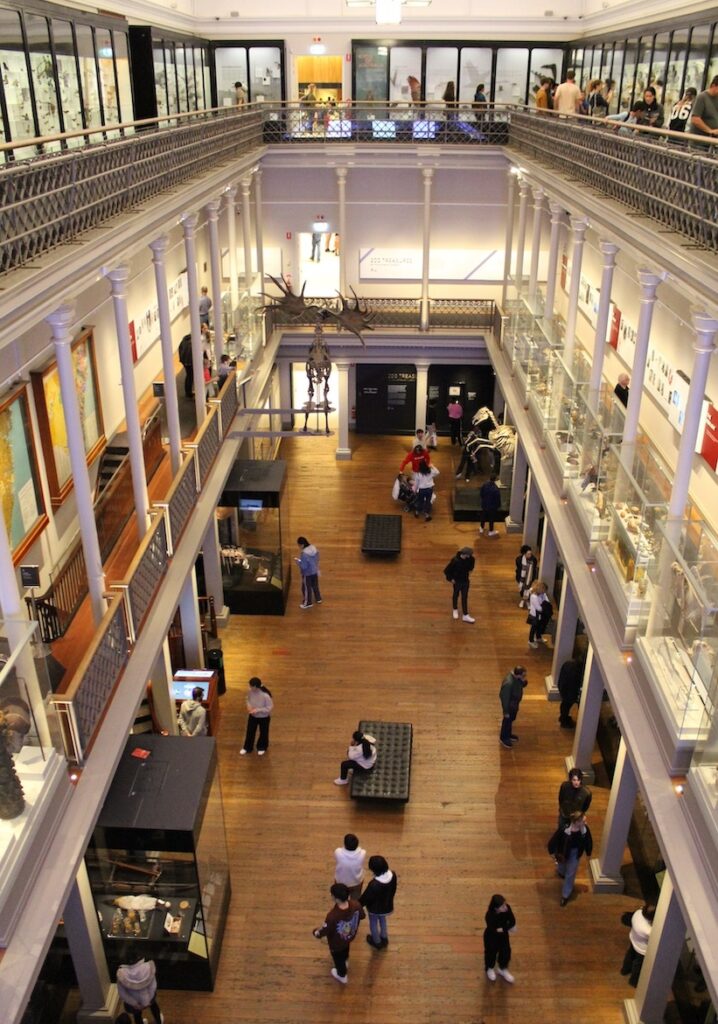
Artifacts from James Cook’s travels around the world presently are on display in Sydney at the Australian Museum’s 200 Treasures Exhibit. Photo by Richard Varr
Cook’s mission was to observe the transit of Venus across the sun on Tahiti in 1769, important because it helped establish the distance between the Earth and Sun, known as the Astronomical Unit, while also determining the size of the Solar System. British astronomer Charles Green joined Cook and the botanists in recording the event using two reflector telescopes.
Another key mission directive was to look for the southern continent that back then was thought to exist. “He tipped his toes into the high latitude of the South Pacific,” says historian David Nicandri, a former Executive Director of the Washington State Historical Society and author of Captain Cook Rediscovered: Voyaging to the Icy Latitudes, and Discovering Nothing: In Pursuit of an Elusive Northwest Passage. Nicandri explains Cook sailed the closest to Antarctica during the second voyage, 71 degrees south latitude, farther than any explorer at the time. “Cook got far enough south that the weather got a little bracing,” he adds, but it was late in the season and he had to turn back north.
Australia’s Columbus?
When it comes to the great explorers, Captain Cook – in a broad sense – was to Australia what Christopher Columbus was to the Americas. “There are some parallels, but the analogy between Columbus and Cook is not a perfect one,” Nicandri notes. “We’re talking about different types of exploration.”
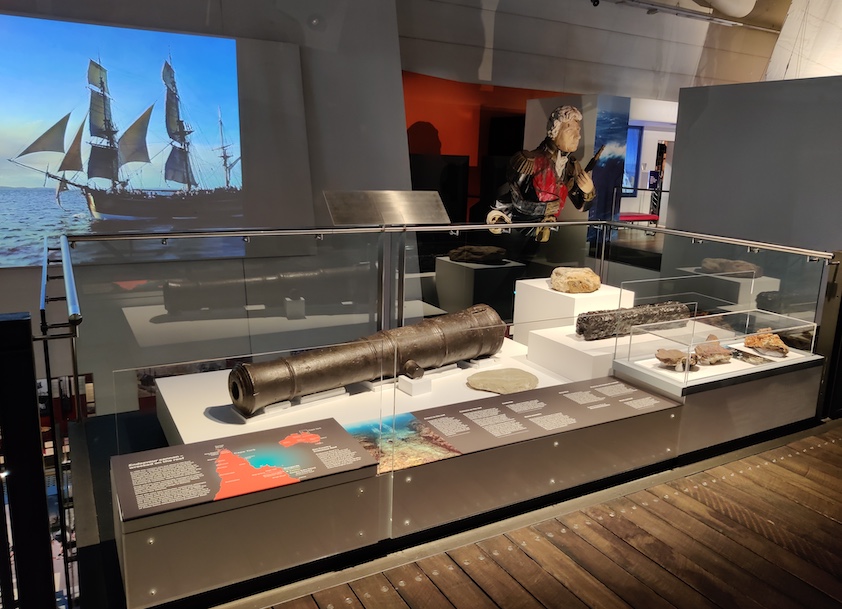
One of the original HMB Endeavour’s six cannons that were jettisoned to save the ship from sinking on the Great Barrier Reef at what’s now Cooktown, Queensland. The cannons were retrieved in 1969. This one is on display in Sydney’s Australian National Maritime Museum. Photo courtesy of Australian National Maritime Museum
Nicandri points out Columbus set more imperialistic and mercantilist goals including enslaving and converting native peoples, while Cook’s voyages at first focused on mapping world geography, in particular the Pacific Basin. “He’s recently been described as the Columbus of the Pacific, but that’s typically in the context of the deleterious aspects that set in motion a sequence of disastrous events regarding how many of those cultures fared thereafter.”
As elsewhere in the world, European colonization in Australia brought the unintended consequences of disease, displacement and the stressing of natural resources. “Each anniversary of Cook’s landing has only galvanized Indigenous voices to more strenuously assert that this was always aboriginal land,” says Matt Poll, Manager of Indigenous Programs at the Australian National Maritime Museum. “Newer generations have a far greater confidence that future stories of European colonization tell authentic stories of how this history occurred.”
The Great Barrier Reef: a Disaster Averted
Just before midnight on June 10, 1770, Endeavour lodged on a reef along the Great Barrier Reef near what’s now Cooktown in northeastern Queensland. For the next 24 hours, crews worked frantically to prevent the ship from sinking, removing water and tossing 48 tons overboard to lighten the vessel including ballasts and six cast iron cannons. “I think it could be called the pivotal moment in Cook’s career as a navigator because everyone on deck thought they were doomed,” says Nicandri. “But he was very cool-headed and came up with a plan to patch the hole that the coral reef had breached in the ship.” If Endeavour had sunk, all of Bank’s and Solander’s botany specimens and drawings would be lost along with maps, charts and descriptions of newly encountered cultures.
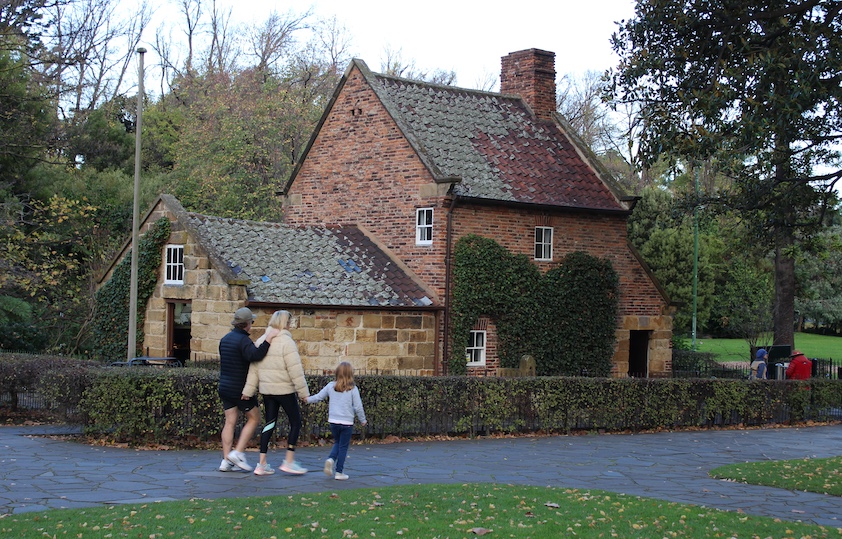
Cook’s Cottage in Melbourne’s Fitzroy Gardens is the actual 18th-century cottage of Cook’s parents, James and Grace Cook, that once stood in North Yorkshire, England. In the early 1930s, it was torn down and then reassembled in Melbourne to celebrate the centenary of the State of Victoria. Photo by Richard Varr
It took the crew seven weeks to repair the ship along what’s now – and appropriately named – the Endeavour River at Cooktown. Because of their time there, the former gold rush town is noted as the continent’s first white settlement. Today, sights to see include the Cooktown Botanic Gardens which includes plant species first collected by Banks and Solander. Black Mountain (Kalkajaka) National Park sits to the south with its gray granite boulders and unique species found nowhere else, while also having religious significance to aboriginal people. Artists sell indigenous arts and crafts in the Cooktown Creative Arts Centre.
The key attraction is the Cooktown Museum displaying one of Endeavor’s six cannons and an anchor thrown overboard. The cannons and other artifacts were retrieved in 1969 from where they were dumped. Three of the cannons remain in Australia and the others are now on display in Wellington, London and Philadelphia. The second of the Australian cannons is in Canberra’s National Library of Australia, while Sydney’s National Maritime Museum currently displays the third – not a permanent exhibit but currently on loan from the New South Wales National Parks and Wildlife Service Collection. The Maritime Museum also has recovered kentledge (iron ballasts) that was thrown overboard.
The Oldest Building in Australia
Cook’s Cottage is the actual two-story home of Cook’s parents, James and Grace Cook, that once stood in rural North Yorkshire, England, built by his father in 1755 after the younger Cook joined the Royal Navy. Lived in through the years, it was left vacant during the time of the Great Depression. That’s when the cottage’s owner struck a deal with Australian businessman and philanthropist Sir Russell Grimwade to buy it as a gift for the people of Victoria to celebrate the state’s centenary.
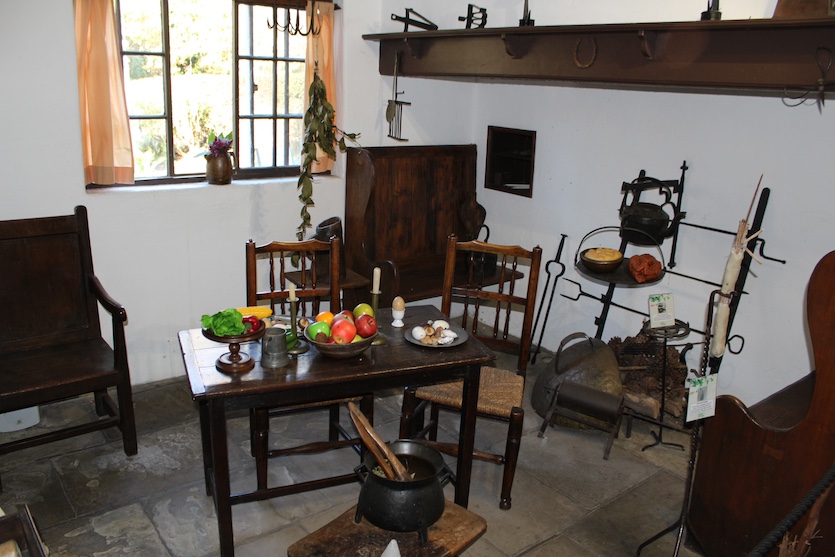
Period furniture inside Cook’s Cottage in Melbourne’s Fitzroy Gardens, the actual 18th-century cottage of Cook’s parents. Photo by Richard Varr
Transported to Melbourne, it was then reassembled in leafy Fitzroy Gardens on the eastern edge of downtown’s mix of Victorian architecture and modern steel and glass towers. While Captain Cook didn’t actually grow up in the cottage, he did visit between voyages. The simple thatched UK cottage where he was born burned down in 1786.
Noted as the oldest building in Australia, Cook’s Cottage opened to the public in October 1934. Today, staff in period clothing greet tourists. Ivy cloaks its outside walls while a tour inside reveals a typical simple kitchen with hanging pots, a fireplace and an old grandfather clock. The main bedroom upstairs includes a rope-framed bed and a warming pan. A bronze statue of the great explorer stands in an adjacent garden.
The State Library Victoria in Melbourne holds the actual land transfer and sale documents of the cottage in 1755 and 1772 during Cook’s lifetime, one signed by him with an original red wax seal. Also on file are facsimiles of his marriage certificate to Elizabeth Batts in 1762 and letters pertaining to his voyages.
Settling Sydney
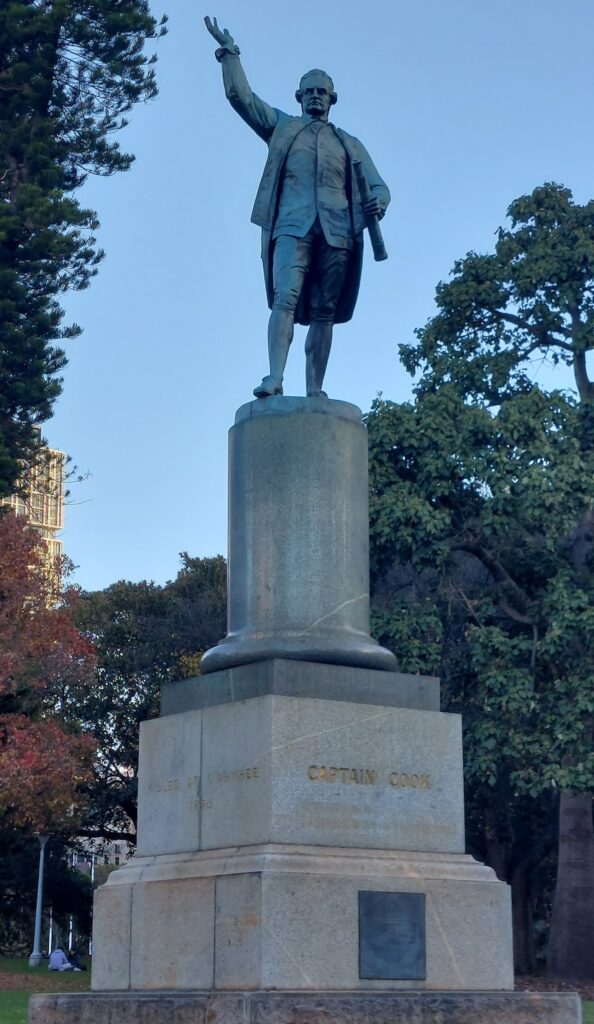
A statue of Captain James Cook clutching a telescope stands in Sydney’s Hyde Park opposite the Australian Museum housing some artifacts gathered from Cook’s three journeys around the world. Photo by Richard Varr
Opposite the Australian Museum in Sydney’s leafy and green Hyde Park, Australia’s oldest park, stands a towering statue of Cook gripping a telescope. Inside, the museum’s 200 Treasures exhibit displays artifacts from Cook’s travels including his feathered Hawaiian cape presented as a gift during his fatal third voyage, a decorative shell trumpet from the Marquesas Islands, French Polynesia, and turtle shell and bone fishing hooks he gathered from New Zealand.
It took 18 years after Cook’s first landing for colonization to begin. “There was no use for Australia at that point for England. It was purely just to claim it and get a stronger position in the Pacific,” says Helen Fraser, director of Ultimately Sydney, a luxury private charter and city tour specialist. But when England could no longer send its convicts to the American colonies, Australia seemed like a good bet. In 1788, Captain Arthur Phillip led the first fleet of 11 ships to create a convict settlement, sailing into Botany Bay and ending up at what’s now Sydney Cove.
“It wasn’t until after the War of Independence in your country that it started to get important again,” Fraser tells me. “So do you know we like to thank Americans that we’re here at all!”![]()
A former newspaper and television reporter, Houston-based writer Richard Varr is a member of the Society of American Travel Writers (SATW). His recent East-West News Service articles explored the Iberian city of Mérida and savored the coffee culture of Bogotá, Colombia

